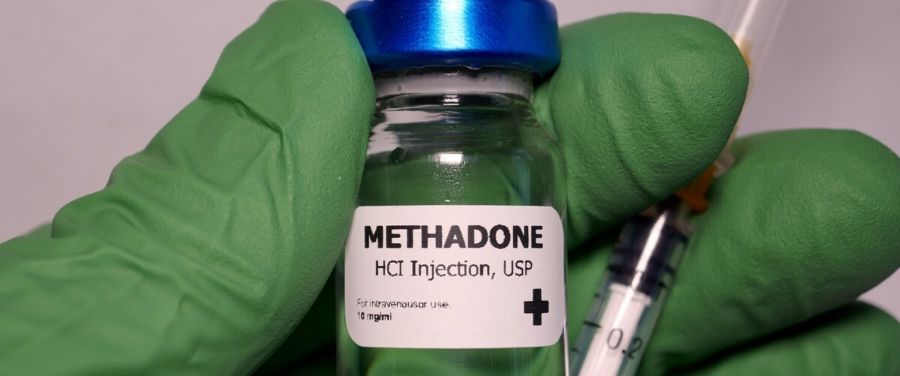Generic Name— Methadone
Brand Names— Dolophine, Diskets, Methadose, Methadose Sugar-Free
What Is Methadone?
Methadone is an opioid used for opioid maintenance therapy in opioid dependence and for chronic pain management. Methadone belongs to a class of drugs known as opioid analgesics. Detoxification using this medication can be accomplished in less than a month, or it may be done gradually over as long as six months. It helps to prevent withdrawal symptoms caused by stopping other opioids.
It was approved for medical use in the United States in 1947. It is on the World Health Organization’s List of Essential Medicines, the safest and most effective medicines needed in a health system. It is regulated similarly to other narcotic drugs. (1)
Methadone is usually taken by mouth and rarely by injection into a muscle or vein.
Interactions:
Some medications may interact with this drug; including (2) (3) —
- St. John’s wort
- HIV drugs such as ritonavir
- Naltrexone
- Azole antifungals such as itraconazole
- Macrolide antibiotics such as erythromycin
- Rifamycins such as rifampin
- Drugs used to treat seizures
- Certain pain medications such as pentazocine, nalbuphine or butorphanol
- Monoamine oxidase inhibitors (MAOIs) such as methylene blue, isocarboxazid, linezolid, moclobemide, phenelzine, procarbazine, selegiline, tranylcypromine, rasagiline or safinamide
- Drugs that affect serotonin levels in your body — a stimulant, or medicine for depression, migraine headaches, serious infections, Parkinson’s disease, or prevention of nausea and vomiting
The risk of serious side effects may be increased if the medication is taken with other products that may also affect breathing or cause drowsiness. Therefore, tell your doctor if you are taking other products such as —
- Alcohol
- Marijuana or cannabis
- Psychiatric medicines
- Allergy or cough—and—cold products
- Muscle relaxants
- Medicine for sleep or anxiety such as alprazolam, diazepam, zolpidem
Precautions:

Before using this medication, tell your doctor about your medical history, especially of (2) (3) —
- Constipation
- Diarrhea due to infection
- Paralytic ileus
- Kidney disease
- Liver disease
- Difficulty urinating
- Disease of the pancreas (pancreatitis)
- Gallbladder disease
- Brain disorders such as head injury, tumor, seizures
- Breathing problems such as sleep apnea, asthma, chronic obstructive pulmonary disease (COPD)
- Mental or mood disorders such as confusion, depression, thoughts of suicide
- Personal or family history of a substance use disorder
What Are The Side Effects Of Methadone?
Common methadone side effects may include —
- Nausea
- Vomiting
- Dizziness
- Drowsiness
- Increased sweating
- Pain, redness, or swelling where the medicine was injected
Call your doctor or health care provider if you have —
- Nausea
- Vomiting
- Loss of appetite
- Dizziness
- Weak or shallow breathing
- Severe constipation
- Shortness of breath
- Fast or pounding heartbeats
- Fluttering in chest
- Worsening tiredness or weakness
Seek medical help right away if you have symptoms of serotonin syndrome, such as —
- Fever
- Sweating
- Shivering
- Agitation
- Hallucinations
- Fast heart rate
- Muscle stiffness
- Twitching
- Loss of coordination
- Nausea, vomiting, or diarrhea
Long—term use of opioid medication may cause infertility in men or women. Serious side effects may be more likely in older adults and those who are malnourished or debilitated.
What Should I Avoid While Taking Methadone?
Grapefruit may interact with methadone and lead to many side effects. Avoid the use of grapefruit products. Avoid consuming alcohol. Dangerous side effects or death could occur.
Avoid doing work that needs attention such as driving or operating machinery. Dizziness or severe drowsiness can cause falls, accidents, or severe injuries.
What Happens If I Miss A Dose Of Methadone?
If you using this medication for pain, take the missed dose as soon as you remember. Take the next dose 8 to 12 hours later.
If you are using this medicine for drug addiction, take the missed dosage the next day at the regular time. If you miss the doses for longer than 3 days in a row, call your doctor or health care provider for instructions. You may need to restart at a lower dose. Do not take two doses at one time.
What Happens If I Take An Overdose?
An overdose can be fatal, especially in a child or other individuals using methadone without doctor’s prescription. Overdose symptoms may include severe drowsiness, muscle weakness, slow heart rate, cold and clammy skin, very slow breathing, pinpoint pupils, or coma.
Seek emergency medical help or call the Poison Help line at 1—800—222—1222.
RELATED ARTICLES:
